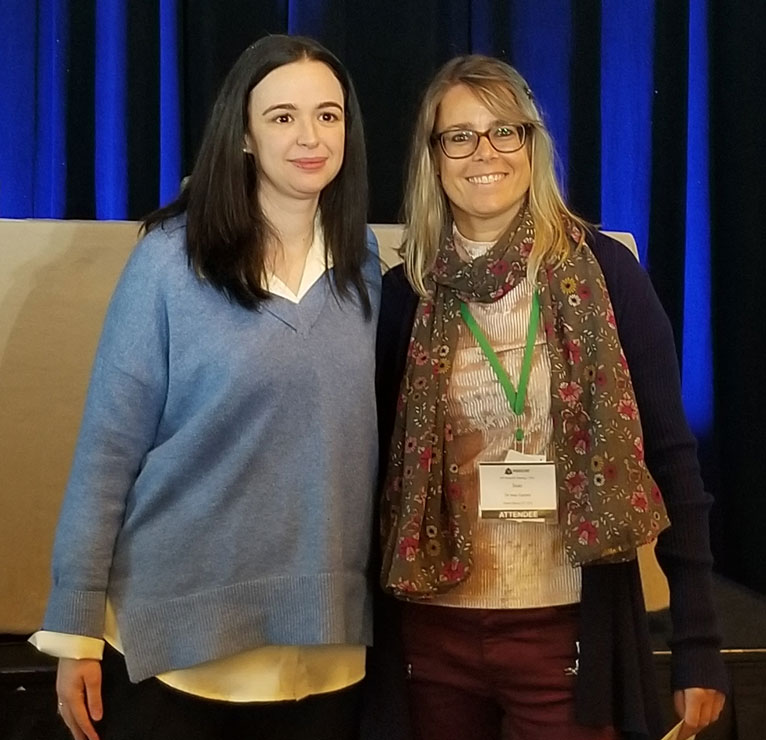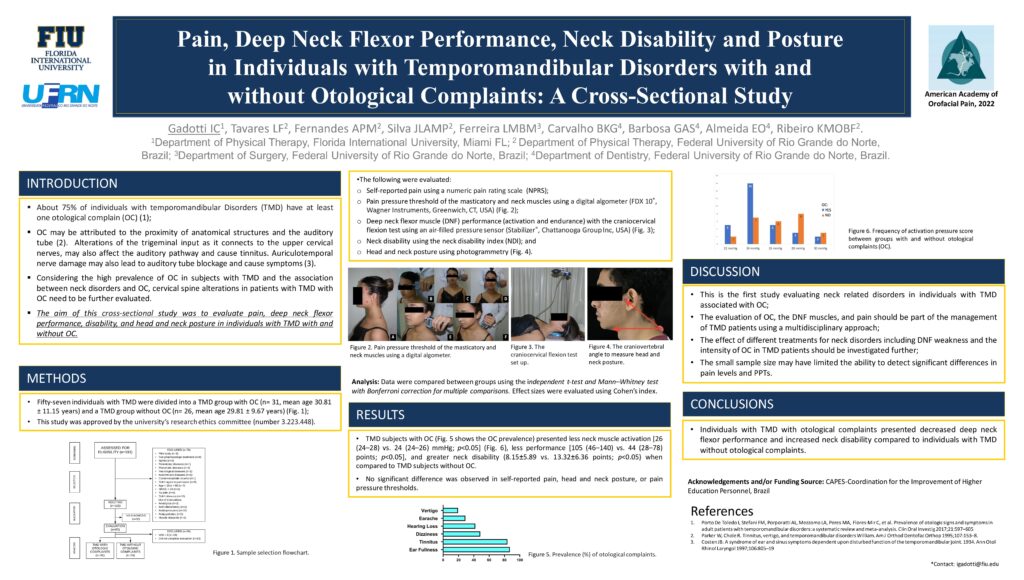Award Winner
Pain, Deep Neck Flexor Performance, Neck Disability and Posture in Individuals with Temporomandibular Disorders with and without Otological Complaints: A Cross-Sectional Study
Each year The AAOP invites members and non-members to submit abstracts to be
considered for a poster presentation at the AAOP Annual Scientific Meetings.
We are pleased to present the 2022 2nd place winning poster.
 This study was a collaboration between the Department of Physical Therapy, Department of Surgery, and Department of Dentistry from Federal University of Rio Grande do Norte in Brazil, and also from the Department of Physical Therapy from Florida International University in Miami.
This study was a collaboration between the Department of Physical Therapy, Department of Surgery, and Department of Dentistry from Federal University of Rio Grande do Norte in Brazil, and also from the Department of Physical Therapy from Florida International University in Miami.
So, considering the high prevalence of otological complaints in subjects with temporomandibular disorders (about 75% of them will have at least one otological complaint) and also the association between neck disorders and otological complaints, the aim of this cross-sectional study was to evaluate pain, deep neck flexor performance, disability, and head and neck posture in individuals with temporomandibular disorders with and without otological complaints. A total of 57 individuals with temporomandibular disorders participated, and they were divided in the TMD group with otological complaints, (21 subjects), and TMD group without otological complaints (26 subjects).
We used the Numeric Pain Rating Scale to evaluate self-reported pain. We use a digital algometer to measure pain pressure threshold of both masticatory and neck muscles, as you can see in Figure 2, and the craniocervical flexion test was used to evaluate the performance of the deep neck flexor muscles, as you can see in Figure 3. The Neck Disability Index, which is a self-reported questionnaire, was used to measure neck disability, and head and neck posture was evaluated using photogrammetry. So we measured the craniovertebral angle in pictures taken from sagittal view, as you can see in Figure 4. So most of the otological complaints present were earfulness, tinnitus and dizziness, as you can see figure 5.
Okay, so the subject with TMD with otological complaints presented less neck muscle activation, as you can see in Figure 6, last performance and greater neck disability when compared to subjects with TMD without otological complaints. However, no significant differences were found for self reported pain, head and neck posture, and pain pressure thresholds.
To conclude, individuals with temporomandibular disorders with otological complaints presented decreased deep neck flexor performance and increased neck disability compared to individuals with TMD without otological complaints. Future studies should increase the sample size. The sample size may have limited the ability to detect significant differences in pain levels and pain pressure threshold. Thank you.
Author(s): Gadotti IC1, Tavares LF2, Fernandes APM2, Silva JLAMP2, Ferreira LMBM3, Carvalho BKG4, Barbosa GAS4, Almeida EO4, Ribeiro KMOBF2
Poster Committee Chair: María F. Hernández




